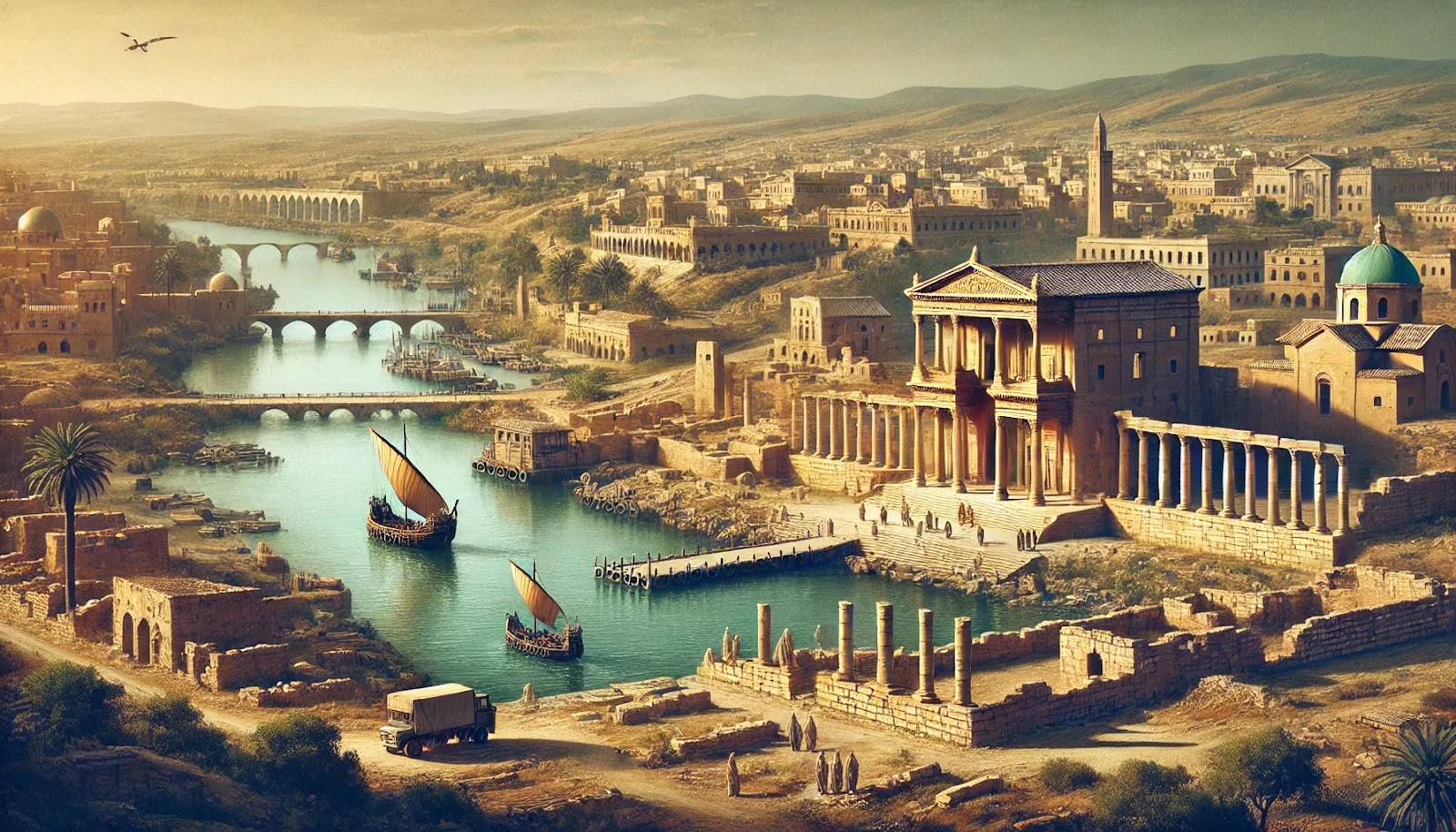Sala, the ancient city now known as Salé, holds within its history a treasure trove of cultural and economic significance. Nestled along the Bouregreg River, Sala once thrived as a major trade hub, influenced by Phoenician settlers, Roman rulers, and Mauritanian kings.
Its hidden treasures like coins, pottery, and architectural remnants are now the subject of a fascinating exhibition at the Musée de Bank Al-Maghrib, visitors are invited to explore these remarkable finds and dive deep into the story of an ancient Moroccan city that played a crucial role in Morocco's history.
The Fascinating History of Sala: From Phoenicians to Romans
Sala’s origins trace back to the Phoenicians, who first established it as a key trade post, connecting North Africa with the Mediterranean. Over time, Sala grew into a bustling center of commerce, becoming an important city within the Roman province of Mauretania Tingitana around 40 AD, this transformation brought new architectural styles and economic growth, as the city became a crucial link between the Mediterranean and African interiors.
Under Roman rule, Sala continued to thrive, benefiting from its strategic location and the vast Roman trade networks that spanned the empire, the influence of different civilizations has left a rich legacy of cultural exchange, evident in the artifacts and ruins found within the city’s ancient boundaries.
Key Archaeological Discoveries: Coins, Pottery, and Everyday Life
Archaeologists have uncovered a wealth of items that tell the story of Sala’s daily life and its importance as a trade center, among the most notable discoveries are ancient coins, featuring the likenesses of Roman emperors and Mauritanian rulers, these coins reveal the economic connections between Sala and the rest of the Roman Empire, as well as its local autonomy during various periods.
Additionally, pottery from both local and foreign origins has been found, showing a blend of cultural influences, some pieces reflect Roman designs, while others remain distinctly North African, highlighting the city’s role as a crossroads of trade, tools, jewelry, and household items further illustrate the daily lives of Sala’s inhabitants, offering a window into a world that once thrived along the Bouregreg River.
The Role of the Bouregreg River in Sala’s Prosperity
Sala’s location along the Bouregreg River was key to its success as a trade hub, the river connected the city to the Mediterranean and allowed it to control important trade routes between the African interior and the rest of the Roman Empire, this natural advantage made Sala a vital link in the Roman economic system, with goods such as olive oil, pottery, and textiles flowing through its markets.
The river also provided protection and access to fertile lands, supporting both agricultural production and the city’s defense, by controlling the Bouregreg River, Sala ensured its place as a prominent center of trade and culture for centuries.
Roman Influence: Sala as a Major Trade Hub
Under Roman rule, Sala flourished as a city of great economic importance, the Romans invested in its infrastructure, building roads, public baths, temples, and forums, which further solidified its role as a thriving trade hub, that make sense Sala became known for producing goods like olive oil and ceramics, which were exported throughout the Roman Empire.
The Roman presence is evident in the architectural fragments uncovered during excavations, as well as the many Roman coins and tools found at the site, these finds underscore Sala’s significance within the Roman Empire and highlight the city’s deep ties to the broader Mediterranean world.
Visit the Sala Treasures Exhibition at Bank Al-Maghrib Museum
To truly appreciate Sala’s hidden treasures, there’s no better opportunity than the current exhibition at the Musée de Bank Al-Maghrib, titled Sala, Trésors cachés d'une cité marocaine antique. This unique exhibition brings together the remarkable archaeological finds from Sala, offering visitors an immersive experience of the city’s ancient past. From ancient coins to pottery and architectural remnants, the exhibition showcases the cultural and economic legacy of Sala through carefully curated displays.
Running until April 2025, the exhibition invites visitors to delve into the history of Sala and discover how this ancient Moroccan city helped shape Morocco's rich heritage, Regardless of if you're a history enthusiast or simply curious about Morocco’s ancient civilizations, the exhibition offers a unique opportunity to witness Sala’s fascinating history up close.
The grand opening is set for Thursday, October 17, 2024, at 5:30 PM. Don’t miss this chance to explore one of Morocco’s most significant ancient cities and its hidden treasures.
Conclusion:
The Sala, Trésors cachés d'une cité marocaine antique exhibition at the Musée de Bank Al-Maghrib brings this rich history to life, showcasing remarkable archaeological finds that illustrate the city’s role as a vital trade hub and cultural crossroads.
This exhibition provides a unique opportunity to explore the artifacts, coins, and pottery that once belonged to the people of Sala, by visiting the exhibition, you can experience firsthand the fascinating legacy of this ancient city and appreciate the importance of preserving Morocco’s historical treasures for future generations.
Questions about your visit?
Contact Museum's Services at 0537 21 64 72.









CONVERSATION